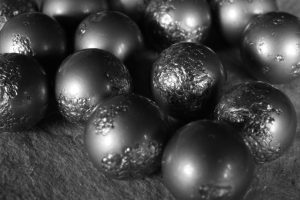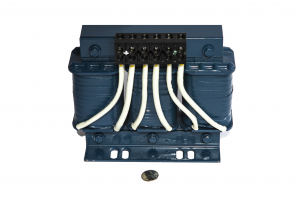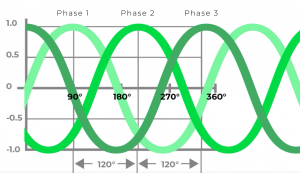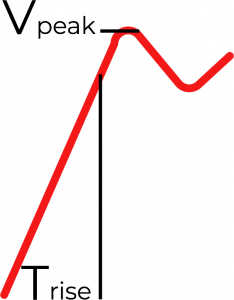5 Ways a Clean Power VFD Eliminates Motor Failure
A business owner phoned the office a few weeks ago asking if SmartD carried a 5 HP 380V Variable Frequency Drive with 380V input and output and discussed the pitfalls of motor failure. SmartD has a 5 HP standard 6 pulse open PCB modules available, and 20-30HP, 480V Clean Power Variable Frequency Drive that just went to market this June 2022.
After asking the business owner what kinds of applications the VFD would be used in, they breathlessly exclaimed that they worked in the field of recycling, that they experience on average a loss of $60,000 a day when the assembly lines or the systems go down due to power drive system (PDS) failure.
Every day, in densely populated areas, millions of people and thousands of factories rely on water treatment plants and distribution networks to fulfill their needs for water. Defective service caused by issues with power drive systems has unacceptable consequences, often the provider undertakes the burden of high fees when a service is not delivered as contracted. Aversion to production or service loss is the primary driving force behind the Clean Power product line.
 SmartD’s Clean Power addresses the 5 common issues with VFDs resulting in motor failure: destruction to the motor bearings due to Common Mode Voltage, destruction to motor insulation and windings due to dV/dt on the PWM signal, harmonics, bulky added systems components that serve as band-aids to existing problems, and over-heating due to excess energy.
SmartD’s Clean Power addresses the 5 common issues with VFDs resulting in motor failure: destruction to the motor bearings due to Common Mode Voltage, destruction to motor insulation and windings due to dV/dt on the PWM signal, harmonics, bulky added systems components that serve as band-aids to existing problems, and over-heating due to excess energy.
SmartD’s Clean Power variable frequency drive eliminates motor failure by addressing the root cause: the square PWM signal.
1. Common Mode Voltage Leading to the destruction of the motor bearings

Destruction of the motor bearings occurs due to shaft current discharging large volumes of electrical arcs, creating pitting, frosting and fluting in motor bearings and bearing races, resulting in premature motor failure.
To get around this kind of damage, the typical solution is a combination of grounding rings, grounding straps, ceramic bearings, insulated motor housings and sometimes coated bearing races.
The Clean Power VFD does not produce the Common Mode Voltage due to the bearing current that causes electrical arcing, thereby eliminating the source of this kind of motor bearing damage.
2. Damaged insulation and motor windings due to dV/dt on the PWM signal
Spikes from the fast rise of voltage of the squared PWM signal are sources of hotspots that damage the insulation of the motors.
These hotspots are basically over-temperature points and they are accumulating over time until the insulation breaks down and the windings short-circuit.
The industry standard to remedy this kind of failure is by using « VFD-rated » motors with VFD insulation by NEMA standards.
The Clean Power VFD only produces clean sine wave output, therefore a VFD rated motor is not required, with no chance of damage occurring to the insulation or motor windings.
3. Harmonics distortion disturbing electrical systems components
Harmonics – an ordinary VFD is a non-linear load. It generates unwanted harmonics. Those harmonics are a source of current distortion. Which are generating over-temperature on transformers and cables, false triggering of MCB (mechanical circuit breaker) and perturbation of any electronic device connected to the same line. Adding passive or active filters may mitigate harmonics and reduce the current distortion down to 10%.
Clean Power with AFE will bring that distortion lower than the standard recommendation of 5%. 5% is deemed acceptable by power providers. Moreover, many other advantages such as energy regeneration and power factor correction are benefits from the embedded active front end.
4. Bulky, specialized external components
 A long motor lead (+ 100 ft) permits the VFD PWM pulses to accumulate, creating peak voltages that will disintegrate the motor insulation and short the motor windings.
A long motor lead (+ 100 ft) permits the VFD PWM pulses to accumulate, creating peak voltages that will disintegrate the motor insulation and short the motor windings.
To avoid this issue you can spend premium dollars on an output sine wave filter to convert the PWM wave on the output of the VFD. Alternatively for a motor that meets NEMA MG1 part 30 or 31 standards, you may want to install a dV/dt filter on the output to limit voltage spikes.
Also, choosing a VFD that adjusts its transistors’ switching frequency may limit voltage spikes on long leads, combined with VFD-specialized cables the issue can be minimized.
Depends on the distance between motor and drive and depends on the type of motor. These kinds of added specialized filters working in tandem with an ordinary VFD doubles the size of your electrical cabinet.
In reality, often people don’t use these components and instead accept system failure as the new normal.
A Clean Power VFD delivers a clean sine wave that does not generate energy accumulation in the parasitic capacitance of the cable, therefore no filter is needed, and the lead length may be increased to over 300 ft.
5. Excess energy resulting in overheating
VFDs overheat when the motor decelerates from high speed to lower speed. The motor acts as a generator. This generates energy that if not absorbed, may burn components, hence this energy must be dissipated. A 6 pulse VFD can increase ramp down time, but if the load is pulling on the motor, a braking resistor must be added to dissipate the energy.
The Clean Power VFD having an AFE (active front end) sends back this surplus energy to the grid.
Conclusion

Clean Power by SmartD addresses common issues with ordinary variable frequency drives by eliminating the root cause: the square signal.
Clean Power VFD produces a clean sine wave output, no more drawbacks, no more band-aid solutions to mitigate harmonics, effectively cutting the head off the snake.
Cette publication est également disponible en : English





